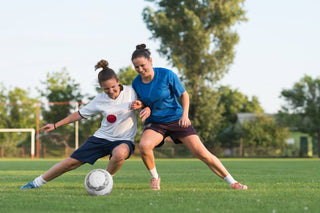Have you had an ACL injury which required surgery? If so, have you had an additional knee surgery in less than 2 years? If you’re a young female athlete, it’s much more likely that you answered yes to both of these questions.
Soccer, basketball, tennis – we're participating in more sports and starting younger than ever. But while these activities have their benefits, including keeping us active and teaching us about teamwork, what happens when we get injured?
And does the rigorous schedule and playing year round lead to an increased risk of injury? The answer is yes.
A study by researchers at New York’s Hospital for Special Surgery looked at surgery statistics for ACL patients under 21 from a New York state database. They found that eight percent of patients with a primary anterior cruciate ligament (ACL) reconstruction had another ACL surgery, and 14 percent had non-ACL knee surgery at a later date.
"Women are far more likely to sustain ACL injuries than men – anywhere from two to eight times more likely in female athletes."
The average time between the first and second ACL surgery was 1.6 years, and the average time between the first ACL reconstruction and subsequent non-ACL knee surgery was 1.4 years, showing that it didn’t take long for reinjury to occur.
Researchers also noted that the study might actually underestimate the actual number of repeat ACL tears, since the database didn’t include patients who did not want to undergo surgery again.
Unfortunately, ACL injury isn’t just something that affects young people. In fact, women are far more likely to sustain ACL injuries than men – anywhere from two to eight times more likely in female athletes.
It may be because higher estrogen levels lead to looser ligaments and less protection, because a woman’s ACL may be smaller than a mans, making it more injury-prone, or because our bodies are aligned differently, especially at the quadriceps.

